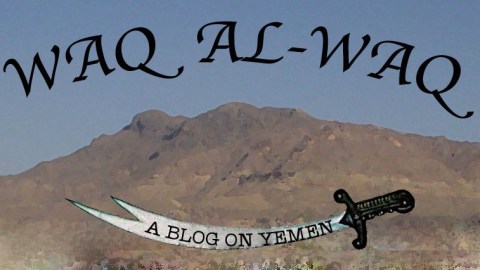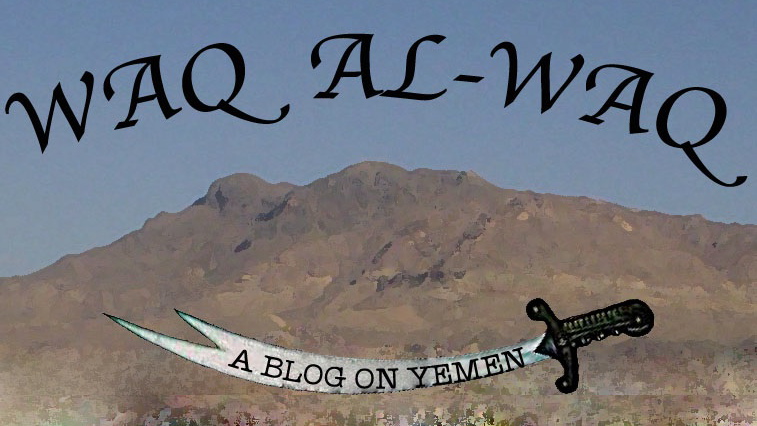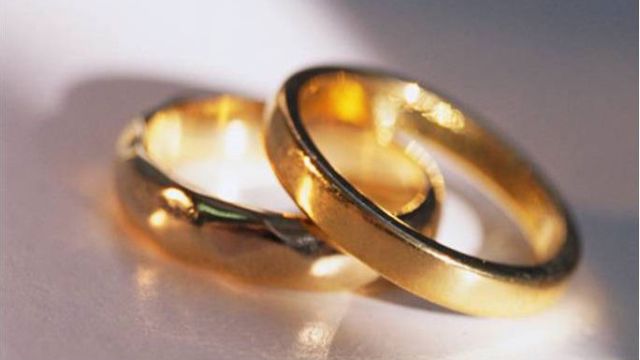What Were They Thinking (Yemen Edition)

Throughout this spring and summer, while Yemen’s protesters have continued their call for President Salih to step down, myself and several other Yemen observers have repeatedly warned the US not to miss the chance to move forward that Salih’s absence presented.
Now, it is very rare for any group of academics, researchers, or analysts to agree unanimously on any one thing. People look at situations differently, they bring different biases to bear, and weigh things differently.
But what myself and others saw was that the US had a unique window of opportunity in Yemen, and that if the US missed, which we worried it was, it might not get another chance to make things right.
Just like other experts and observers, the ones who study Yemen, aren’t prophets and they don’t have special powers (no magic 8-balls at MESA conferences) but they do have years of observation, language skills and historical knowledge – and when they all agree it is important to listen.
But diplomatic actions dragged along with the US seemingly thinking (or at the very least acting in public) as though Saudi Arabia would keep Salih (under house arrest?) in the kingdom indefinitely.
Any reading of Yemeni history, and of Salih’s personal history should have suggested to the US that this would not be the case. Salih likes to think he is the leader that knows more than everyone else, particularly when it comes to Yemen.
When they say he can’t survive, that he can’t make it – he says he can and will. And he is usually right.
So now, Salih has returned to Sanaa and the US is scrambling to figure out what to do – you know, a week after it said this whole thing would be over.
Salih’s return, US dallying, and Saudi muddling all beg the question: What were they thinking?
And this is exactly the question I attempt to answer below:
US: The US is primarily concerned with AQAP in Yemen – this has been the default US posture for the past few years and likely will be for years to come. The US is wary of AQAP exploiting any government breakdown in Yemen, which is why it has struggled to make the transition away from Salih (which it publicly supports) as smooth and as easy as possible. But in trying to engineer an easy and seamless transition that allows for continued cooperation on counterterrorism the US made several mistakes.
First, it underestimated Salih. You would think after the CIA argued he would survive six months when he first came to power in 1978, the US would have learned.
Second, it acted as though time was on its side, seemingly thinking that Saudi Arabia would convince, bribe, or force Salih to remain in Saudi indefinitely. I have no idea where the US got this idea – but it was as mistaken in June as it was last night.
Third, the US seems to equate counterterrorism success (killing members of AQ) with a successful Yemen strategy. This, as I’ve argued before, may work for a while, but it is not a strategy, at best it is a delaying tactic. Increased CT cooperation, which Brennan spoke about two weeks ago, appeared, at least publicly, to dilute US pressure on Salih.
Throughout this entire, bloody eight months, the US has claimed that it is working actively behind the scenes. Maybe that is true, but the impression among many Yemenis, is that the US is pulling its punches – talking tough in public but walking softly in private. The reverse of what one famous president called for.
Finally, leading from the rear, or whatever the US called its deeply flawed strategy in Yemen, was never going to work. Really, think of the faulty logic that suggests Saudi Arabia – a country that just helped put down the democratic uprisings in Bahrain – should be the country to take the lead on a democratic transformation in Yemen.
There are more but I’m tired of talking about US failures.
Saudi Arabia: The Saudis are split. Not everyone backs Salih, some suggest that Ali Muhsin might be a better president – by which Saudi understands someone better positioned to protect their interests in Yemen, which is primarily keeping Yemen’s problems in Yemen.
Most Saudi princes wish Yemen would just fall into the sea. But even the increasingly senile princes in the royal family realize that isn’t going to happen. So instead, they pursue a policy of division, trying to keep Yemen weak enough that it is not a threat to the kingdom, but not too weak that its problems spill over its borders.
This delicate balancing act is less a long-term strategy than perpetual crisis management. But that is Saudi’s Yemen policy.
For a while the kingdom pressed Salih to step down, but over the summer as it appeared clear that there was no clear successor (a non-Salih Salih) some within the kingdom, importantly King Abdullah rethought that pressure.
Sure Yemen was bad, but A.) it was over the border and B.) it could be worse. So, with that thinking Saudi eased up on Salih – it is important that on September 18, a bloody day of crackdown on protesters in Sanaa, Saudi released photos of Salih meeting with King Abdullah. Message don’t get less subtle than that.
Sure, in the Saudi view, Salih is a devil – but he is one they know.
Salih: My view is that Salih felt the country was in a bad enough situation, that people were so fed up enough with the fighting, so tired of the gas lines, the lack of water, the electrical outages, and the rising food prices that a majority of them would welcome him back, hoping against hope that some sort of silent majority would back him in the hope that he could turn back the clock to January.
Essentially, this is the argument he has been making all along – it is me or chaos, he has constantly said, and now he is thinking that a stark illustration of that chaos is enough to bring the protesters to heel.
He will likely given a speech tomorrow, and if history is any guide, he will call for a cease-fire, negotiations and dialogue, but all the while he’ll be thinking how he can survive this latest crisis.
For what it is worth, I think this time Salih has significantly underestimated the thinking of people in Yemen.





